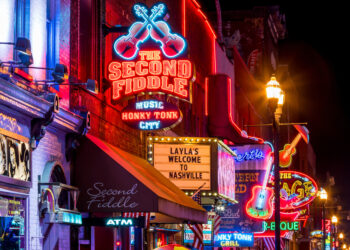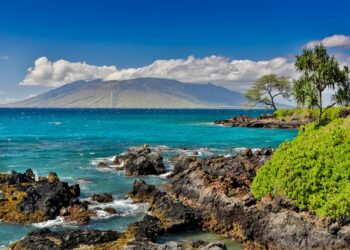Tampa
Short History of Tampa
Known as the "Big Guava," Tampa has a rich and varied history. The Tampa area was initially inhabited by indigenous peoples, including the Tocobaga and the Calusa. Spanish explorers arrived in the 16th century, but the area remained largely uninhabited by Europeans for several centuries. Tampa officially came into existence in the early 19th century and was incorporated as a village in 1849, then as a town in 1855. The city's economy grew significantly with the discovery of phosphate in the late 1880s, leading to a booming mining industry. In the same period, the cigar industry took off, transforming Tampa into the "Cigar Capital of the World." In recent years, Tampa has evolved into a modern metropolis, recognized for its cultural diversity, vibrant nightlife, and sporting events.
FAQ for Tampa
What is the best way to get there?
Tampa is served by Tampa International Airport, with numerous domestic and international flights. It is also easily reachable by car via the I-4 and I-75 interstate highways. Amtrak provides rail service to the city.
What is Tampa famous for?
Tampa is famous for its outdoor activities, historic Ybor City, Busch Gardens theme park, and the Tampa Bay Buccaneers NFL team. It is also known for its beautiful beaches and vibrant nightlife.
What are five interesting facts about Tampa?
- Tampa is known as the "Cigar Capital of the World."
- It is home to the world's longest continuous sidewalk, Bayshore Boulevard.
- Busch Gardens in Tampa was originally an admission-free hospitality promotion by beer magnate, Anheuser-Busch.
- The Tampa Bay area is often referred to as the "Lightning Capital of North America."
- The city is the economic center of western Florida.
How did Tampa get its name?
The name "Tampa" comes from the Calusa phrase "Sticks of Fire," likely referring to the high frequency of lightning strikes in the area.
What are some travel tips for Tampa?
Be sure to visit during cooler months, bring plenty of sunscreen, hydrate often, and take time to explore the historic districts of the city like Ybor City and Hyde Park.
Do I need a visa?
If you're not a U.S. citizen or permanent resident, you will likely need a visa to enter the United States, unless you're from a visa waiver program country.
When is the best time to visit Tampa?
The best time to visit Tampa is from September to December when the weather is pleasant and the tourist crowd is smaller.
Are there local customs I should know for Tampa?
Drinking
The legal drinking age is 21, and it's customary to tip bartenders.
Greetings
People in Tampa are friendly. A simple "hello" or "how are you?" is common when meeting someone.
Public transit
Tampa has buses and streetcars. The TECO Line Streetcar is a fun way to get around downtown and Ybor City.
What is the time zone for Tampa?
Tampa is in the Eastern Time Zone (ET).
What are the voltage/plug types?
The standard voltage is 120 V. The standard frequency is 60 Hz. The power plugs and sockets are type A and B.
What is the currency?
The currency in Tampa, like the rest of the United States, is the U.S. Dollar (USD).
Are ATMs readily accessible?
Yes, ATMs are plentiful in Tampa. They can be found in most shopping centers, grocery stores, and downtown areas.
Are credit cards widely accepted?
Yes, most establishments in Tampa accept credit cards.
Can you use ApplePay and Google Pay?
Yes, many places in Tampa accept both ApplePay and Google Pay.
How much do I tip in Tampa?
Tipping
In Tampa, it's customary to tip for good service. Here are some standard tipping practices:
Restaurants/bars
15-20% of the total bill before tax is standard.
Hotels
For bellhops, $1-$2 per bag. Housekeeping, $2-$5 per day.
Taxis
10-15% of the total fare is customary.
Tour guides
15-20% of the cost of the tour is standard.
About Tampa
| Founded | Population (2022) | Elevation |
|---|---|---|
| 1824 | 398,173 source | 48 feet (15 meters) |
Weather
| Season/Month | High Temp (Celsius) | Low Temp (Celsius) | High Temp (Fahrenheit) | Low Temp (Fahrenheit) |
|---|---|---|---|---|
| Spring (Mar-May) | 27-32°C | 15-21°C | 80-90°F | 60-70°F |
| Summer (Jun-Aug) | 32-33°C | 22-24°C | 90-92°F | 72-75°F |
| Fall (Sep-Nov) | 28-32°C | 19-22°C | 82-90°F | 66-72°F |
| Winter (Dec-Feb) | 20-24°C | 10-15°C | 68-75°F | 50-59°F |



